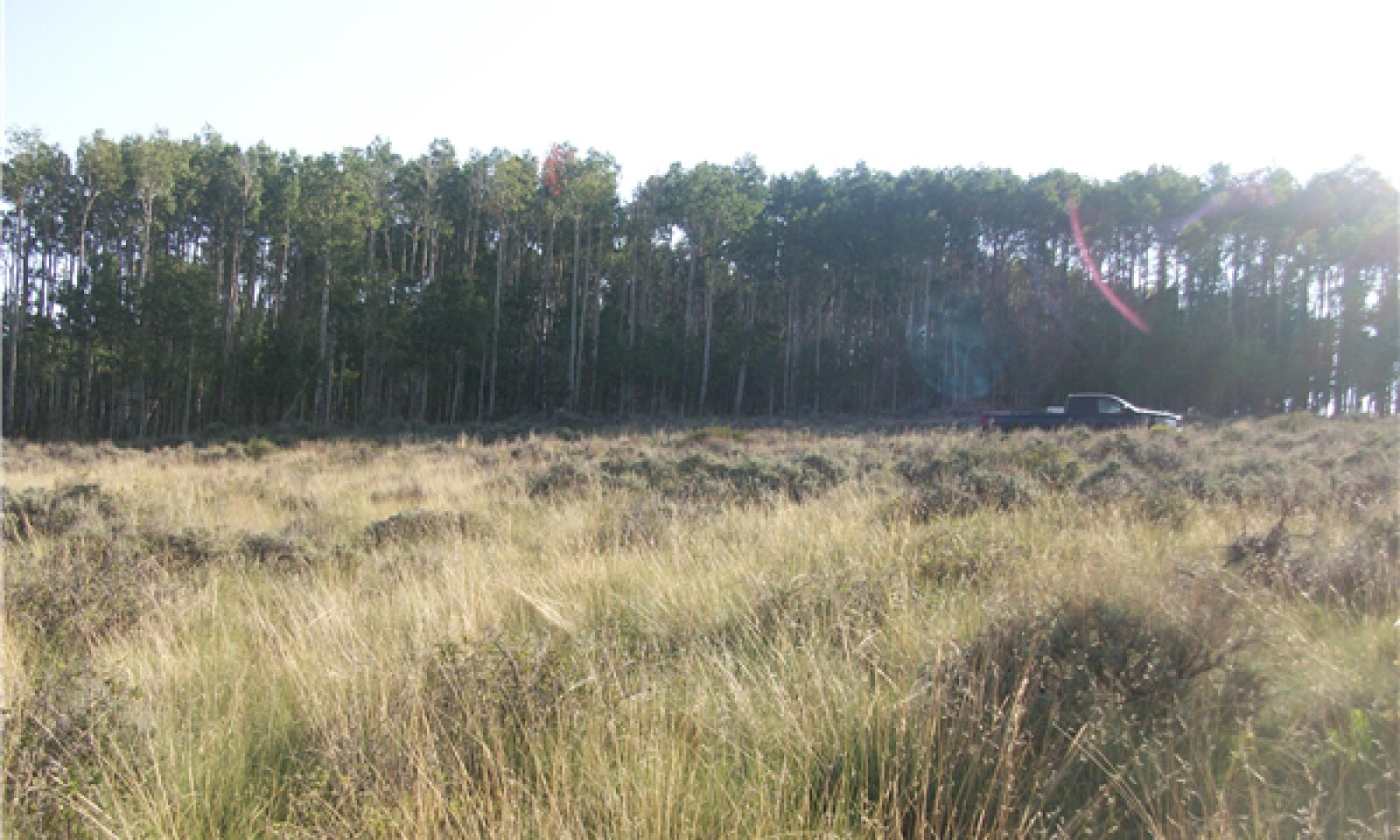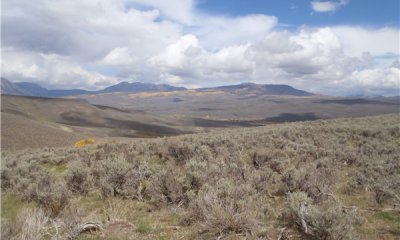
Subalpine Loam Gunnison Basin LRU
Scenario model
Current ecosystem state
Select a state
Management practices/drivers
Select a transition or restoration pathway
- Transition T1A More details
- Transition T1B More details
- Restoration pathway R2A More details
- Restoration pathway R3A More details
- Transition T3A More details
-
No transition or restoration pathway between the selected states has been described
Target ecosystem state
Select a state
State 1
Reference







Description
Dominant view of potential plant community of this ecological site is from grasses and forbs with mountain big sagebrush in the overstory. Thurber’s Fescue is the principal species. Arizona fescue, elk sedge, slender wheatgrass, mountain brome and Porter’s brome are frequently occurring grasses. Major forbs are silvery lupine, yarrow, Richardson’s geranium and American vetch. Mountain big sagebrush is the most conspicuous shrub. Snowberry, yellow rabbitbrush and Woods’ rose grow in scattered stands in the grass. Although this site is commonly bordered by spruce-fir or aspen woodlands, few of these or other trees actually grow on the site.
This state represents the closest description and function of the site prior to European settlement. There are two dominant plant community phases in the reference state. Fire and drought are natural disturbances that change the pathways between community phases. Drought is frequent on this site and fires were of mixed intensity and frequency. Mountain big sagebrush sites it has on average 10-50 years FRI (Fire Return Interval). Sagebrush species less than 50 years old are easily killed by fire (Miller and Eddleman, 2001). Most forb species which re-sprout from a caudex, corm, bulb, rhizome or rootstock exhibit rapid recovery following fire and suffrutescent low-growing or mat-forming forbs such as pussytoes or buckwheat can be severely damaged by fire (Miller and Eddleman, 2001).
The Reference State (1.0) is made up of three community phases- a Thurber’s Fescue/mountain big sagebrush phase (1.1), a Decadent Thurber’s Fescue phase (1.2), and a Thurber’s Fescue / Herbaceous Dominant phase (1.3). The transition between these phases is strongly linked to disturbance regimes and nutrient availability and cycling.
Submodel
Description
The Rhizomatous Species Dominant State (2.0) is characterized by high levels of nutrient cycling and high levels of frequent or sever disturbance. High levels of available nutrients in the soil favor early seral species that are able to take advantage of the free resources which are often weedy like dandelion, western salsify and knotweeds. Sever and frequent levels of defoliation favor plants with low growing points and the ability to re-sprout-- Kentucky bluegrass is a prime example. Large bunch grasses with elevated growing points and shrubs/forbs with little re-sprout ability suffer and are eventually removed from the community. These changes to the site’s processes lead to a dominance of Kentucky bluegrass and other rhizomatous grasses, and lesser forb diversity. Production is also decreased to 1500-2000 pounds per acre.
Submodel
Description
The Mature Sagebrush state (3.0) is a compilation of many factors including soils loss that results in a reduction of water storage capacity and changes in litter composition that reduces nutrient cycling in the soils. All other communities for the subalpine loam ecological site are mostly restricted by nutrient availability but such is not the same for this community. Such drastic alterations have occurred that water becomes the most limiting factor for the site although nutrient cycling and availability can still be restrictive. With reduced storage capacity in the profile and restricted infiltration from surface rock fragments the site becomes drier and species that can take advantage of that, like mountain big sagebrush, proliferate. Increases in woody litter and more complex secondary compounds as well as the drier soil environment are what decreases the rate at which nutrients cycle.
Restoring this site would require rebuilding the soil organic matter, reducing surface rock mantling, and changing the plant community in such a way to promote high cover and herbaceous litter input preferably from leguminous species. Fire is a good tool, if erosion can be controlled; otherwise, brush management (either chemical or mechanical) may be a viable tool.
Submodel
Mechanism
The Reference State (all phases) transition into the Rhizomatous Species Dominant State (2.0) through repeated and heavy disturbance. Disturbance in this instance means anything that would cause the plant community to shift from a site dominated by non-sprouting plants with elevated growing points, to a site with plants with the capabilities to re-sprout after a defoliating event or those who can avoid sever defoliation by keeping growing points low to the ground. Disturbances that can facilitate this transition include fire in combination with continuous improper grazing (wild and domestic), multi-year improper grazing, uncontrolled recreation, and repeated exposure to extreme cold temperatures with little snow cover to insulate elevated growing points.
Mechanism
A Decadent Thurber’s Fescue community (1.2) can transition to the Mature Sagebrush State (3.0) if cover and production are so reduced as to allow for soil loss and degradation. Removal of fire from the system to help cycle nutrients and reinvigorate decadent plants in combination with repeated yearly improper grazing (wild and domestic) that removes soil cover is one way to force the site to transition. Extended periods of drought, lack of insect and pathogen activity can influence this pathway to create a more single age stand of sagebrush. Once the sagebrush becomes dominant numerous changes occur that allow a site to be more susceptible to erosion and continued degradation. This transition is characterized by loss of the understory and increased bare ground between the shrubs and/or other evidence of increased soil erosion. Fine fuels depletion due to inappropriate grazing has shifted fire regimes, from relatively frequent and low to mixed severity (10-50 years mean FRI) to more frequent and high severity (>50 years mean FRI) (McIver, et al, 2010). Short term drought during the winter and early spring will facilitate to increase the understory. Grasses respond quicker and take advantage of mid-summer and late summer moisture where the shrubs do not. This transition will have topsoil loss and in turn reduced water holding capacity of the soil at the surface as the understory is reduced and not present to prevent runoff.
Mechanism
This site could be restored to resemble the reference site of Thurber’s fescue, Arizona fescue and mountain big sagebrush community by seeding mixtures of commercially available native grasses, forbs, and shrubs. Selective remove of rhizomatous species might be needed also, to restore this site. With proper management, over time this site can be come close to the diversity and complexity of the reference state. There would be an intensive management and inputs to change this state 2 back to state 1.
Mechanism
A Mature Sagebrush State (3.0) may be restored if soil functionality and nutrient cycling can be restored to the Thurber’s Fescue /Herbaceous Dominated phase (1.3). If too much soil loss has occurred, extreme measures will probably have to be taken. This is because the soil is imperative in storing water throughout the growing season so that plants seldom experience droughty conditions- if the soil’s ability to store water is decreased (either though decreased depth, increase course material, or reduced infiltration) the site no longer functions like a subalpine loam site should. Fire can be used to reduce woody matter and may temporarily increase soil nutrients thus promoting herbaceous plant production in a normally nutrient restricted site. If fire is to be used, caution should be taken to avoid any further soil loss through erosion. If erosion cannot be controlled, fire may not be the best tool to use to transition this to a preferred condition. Mechanical and chemical brush control treatments can be used to reduce sagebrush cover and release the herbaceous understory by freeing up water and nutrient resources. However, if a soil is severely eroded and water is still restrictive during the growing season other means, like soil amendment; in conjunction with brush management may need to be attempted.
Severely eroded Subalpine loam sites are very difficult to reclaim and without significant and costly inputs and may not achieve the productive potential and community stability of a representative subalpine loam site for many years.
Mechanism
If a Mature Sagebrush State (3.0) does not suffer from soil loss, but is continuously impacted by disturbance it will transition to a Rhizomatous Species Dominated State (2.0). Disturbances can include fire in conjunction with repeated improper grazing (wild and domestic), or long-term repeated improper grazing.
Model keys
Briefcase
Add ecological sites and Major Land Resource Areas to your briefcase by clicking on the briefcase (![]() ) icon wherever it occurs. Drag and drop items to reorder. Cookies are used to store briefcase items between browsing sessions. Because of this, the number of items that can be added to your briefcase is limited, and briefcase items added on one device and browser cannot be accessed from another device or browser. Users who do not wish to place cookies on their devices should not use the briefcase tool. Briefcase cookies serve no other purpose than described here and are deleted whenever browsing history is cleared.
) icon wherever it occurs. Drag and drop items to reorder. Cookies are used to store briefcase items between browsing sessions. Because of this, the number of items that can be added to your briefcase is limited, and briefcase items added on one device and browser cannot be accessed from another device or browser. Users who do not wish to place cookies on their devices should not use the briefcase tool. Briefcase cookies serve no other purpose than described here and are deleted whenever browsing history is cleared.
Ecological sites
Major Land Resource Areas
The Ecosystem Dynamics Interpretive Tool is an information system framework developed by the USDA-ARS Jornada Experimental Range, USDA Natural Resources Conservation Service, and New Mexico State University.




